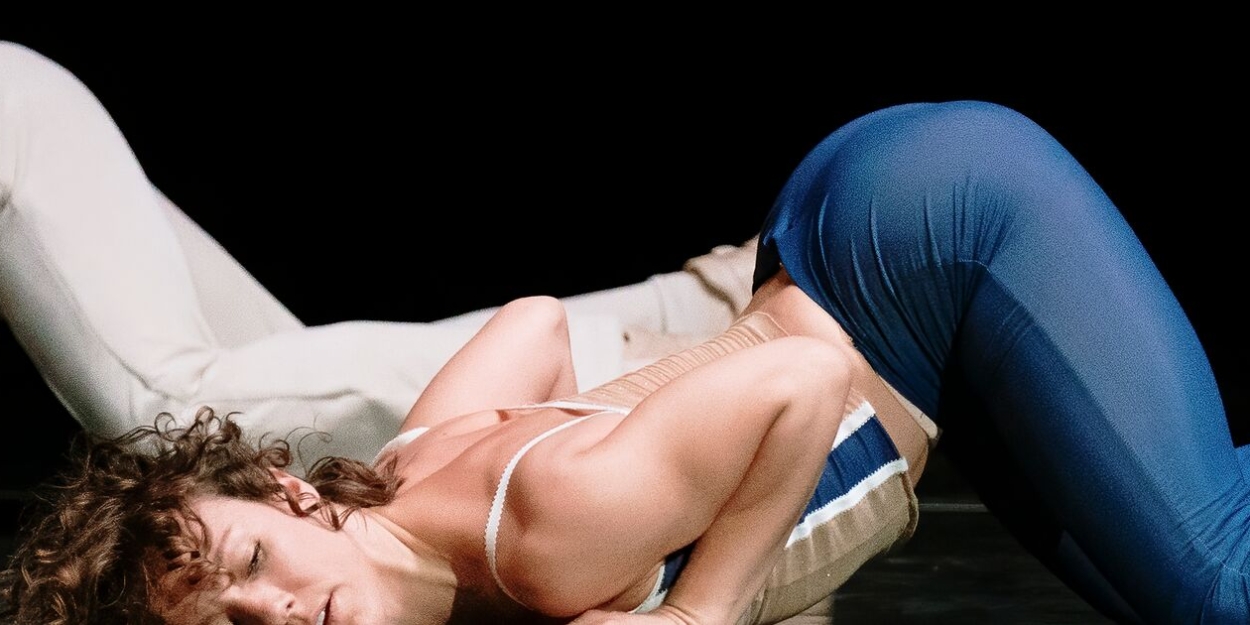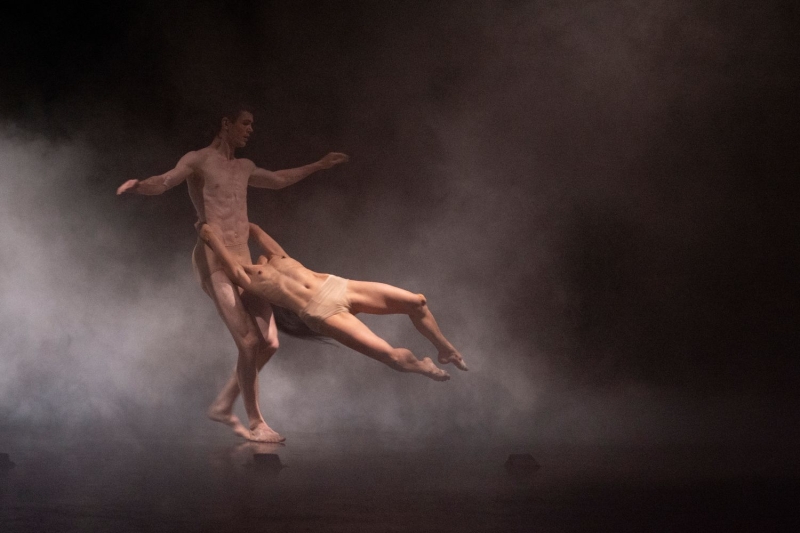Review: BALLET NATIONAL DE MARSEILLE: ROOMMATES, Queen Elizabeth Hall
From floating through clouds to displays of intense sexual pleasure, it is all here.

![]() With an eclectic programme including immersive dreamscapes, a grime-inspired ballet and a revolutionary footstomper, the Ballet national de Marseille present a six-pack of impressive dance pieces.
With an eclectic programme including immersive dreamscapes, a grime-inspired ballet and a revolutionary footstomper, the Ballet national de Marseille present a six-pack of impressive dance pieces.
There’s always a danger that - as happens here - that including something from the macabre minds behind Belgian company Peeping Tom will dominate proceedings. With nods to the unlikely duo of Pina Bausch and David Lynch, Franck Chartier and his fellow artistic director Gabriela Carrizo create beautifully layered pieces that demand your full attention and reward it with intrigue at every step. They brought their mind-blowing Triptych to the Barbican a year ago and Carrizo followed it up a couple of months later with her beautifully surreal La Ruta as part of the NDT1 showcase at Sadler’s Wells.
Oiwa (2022) was the first collaboration by Chartier with the Ballet national de Marseille and was later adapted to become a part of Triptych. It makes a significant impact with a coup de théâtre even before any of the dancers appear. A mysterious dreamscape is conjured up by having smoke voluminously fill the entire stage. Soon it reaches into the first row of the audience. And then the second row. And then the third and fourth before it continues into the hall. The sensation is of gently flying into a cloud while still being seated.

The story is based on the plot of the 19th-century kabuki play Yotsuya Kaidan. Oiwa is happily married until her husband falls in love with someone else. He decides to slowly poison his wife in order not to be accused of murder; after suffering terribly, she returns to her unfaithful spouse as a vengeful ghost. This is wonderfully evoked by four dancers (Sarah Abicht, Izzac Carroll, Nonoka Kato and Antoine Vander Linden) all of whom appear naked from the waist up. The ephemeral and ethereal nature of the grey clouds serves as effective scenery, a startling visual effect and a dramatic metaphor for the nature of Oiwa’s relationship. With impressive expressiveness, they move within the smoke initially with supreme tenderness and later with greater and greater fury and violence. Like some mute opera, Oiwa is vividly rendered through superb acting, thrilling motion and ominous music.
(LA)HORDE, who have directed Ballet national de Marseille since 2019, present two very different pieces. New work Weather is Sweet (performed by Titouan Crozier, Myrto Georgiadi, Myhre Jorgensen, Aya Sato, Elena Valls Garcia and Jonathan Nahimana Vandenbussche) is notionally there to explore “amorous narcissism” and “deconstruct amorous forms” but there is very little about love here. Instead, this is all about the joyous physicality of the sexual act.
An energetic duo waste no time on anything remotely amorous and dive straight into portraying the physical motifs of ye olde bump ’n’ grind: up and down, in and out and round and round over and over again they go. After plenty of happy humping, two more dancers are added to the fray. The focus switches more to group sex with further swapping and switching coming into play. A last pair join the foursome and, after enacting a very hot and sweaty orgy, the climax sees a reverse gangbang: one lucky chap lies back as five other dancers thrust themselves onto him. Bring a fan.
In contrast, (LA)HORDE’s show closing 15-minute excerpt from their Room With A View is a comparatively more prosaic affair that already seems dated. With a mission to “express the legitimate anger felt by today’s generations”, a smartly executed tussle between four of the dancers eventually sees them and seven others packed into a tight square. To the music of another fan of all-caps called RONE, they jump up and down and stomp their feet and punch the air and beat their chests and find numerous other ways to demonstrate their ire.
The square moves from one side of the stage to the other and then to the back, whatever message it has delivered within a fraction of the running time. Whether this is a protest for or against something specific is unclear but - from a country that saw memorable street riots in 1968, farmers burning hundreds of British sheep alive in 1990 and the gilet jaunes protests in 2018 - this piece feels unambitious, unfocused, unfinished and in need of more specific direction.

Two other works are disappointing mirror opposites. Choreographer Lucinda Childs had great success with the music of Phillip Glass for her 1979 masterpiece Dance but for her Concerto (1993) she turned to fellow avant garde maestro Henryk Górecki. Set against the Polish composer’s harpsichord concerto (a high-pitched sonic storm akin to a piano crashing down an very long staircase), this nine-minute short is characterised by its minimalist repetitive movements. A simple design of black clothing and white flooring and backdrop complements the dancers as they move in precise sequences around and between each other while never touching. Concerto is as much about co-ordination as it is about a lack of human connection, the long lines the dancers form further suggesting the dull realities of modern life. It is superbly enacted but, again, the message here is neither fresh nor revelatory about the here and now.
Cecilia Bengolea and François Chaignaud’s Grime Ballet (danser parce qu'on ne peut pas parler aux animaux/Dance Because You Can’t Talk to Animals) is a pumping piece, full of verve and ideas. Starting and ending in silence, it fills the interim with the eponymous musical art form that originated not in some down-at-heel corner of a Parisian banlieue but in London around a couple of decades ago. Quite what the modern generation of grime artists would make of this is debatable: the choreography itself is mostly unstructured and leans heavily on a mélange of pointe work and urban dance. A piece as abstract as this inevitably invites any number of conclusions and, while it is never dull, it’s movements come across more as the physical version of jazz noodling than anything related to grime.
Oiwa sets a high bar for the evening and the only thing approaching its emotional impact is Les Indomptés by Claude Brumachon and Benjamin Lamarche. They have performed this hundreds of times around the world and the appeal of this two-hander is both obvious and warranted. Using sharp dips and sudden falls to the floor and jumping back up again, the pair form an intense bond as they cavort across the wide stage. It has a pounding heart which draws us right inside this tale from the off. Switching from explosive movement to more tender caresses, this is a phenomenally moving work of art.
Ballet national de Marseille: Roommates continues at Queen Elizabeth Hall, Southbank Centre until 3 March.
Photo credit: Blandine Soulage-Rocca
Reader Reviews

Videos

